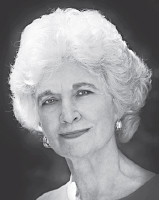1.1 Shirley Brice Heath, Protean Shapes in Literacy Events: Ever-Shifting Oral and Literate Traditions
Chapter 1: Literacies: Where Do Your Ideas About Reading and Writing Come From?

Protean Shapes in Literacy Events: Ever-Shifting Oral and Literate Traditions
SHIRLEY BRICE HEATH

Heath, Shirley Brice. “Protean Shapes in Literacy Events: Ever-Shifting Oral and Literate Traditions.” Spoken and Written Language: Exploring Orality and Literacy. Ed. Deborah Tannen. Norwood: Ablex, 1982. 91–117. Print.
Framing the Reading
Shirley Brice Heath is a professor of linguistics and English at Stanford University. According to her Web site, her “research has centered on the out-of-school lives of young people in subordinated communities.” Heath is a past recipient of a MacArthur prize, has written six books on language, and is an international authority on literacy. Heath is well-known for her use of a research method called ethnography. Ethnographic studies describe cultures or groups using data-gathering means such as observations, interviews, and participation with the group being studied. Her books include the prize-winning ethnographic studies Ways with Words: Language, Life, and Work in Communities and Classrooms (1983) and Identity and Inner-City Youth: Beyond Ethnicity and Gender (1993). In 1999 she released a documentary video, ArtShow, that describes four youth-based arts organizations in the United States.
The selection here is a chapter from an edited scholarly collection focusing on some of the data Heath collected during a ten-year study in which she examined literacy practices in two towns in the Piedmont Carolinas. Heath’s goal for the study, which she eventually published as Ways with Words, was to understand and highlight the early literacy practices of students from “nonmainstream” backgrounds. In this selection, Heath reports on literacy events in Trackton, an African American community.

As you begin reading, pay special attention to Heath’s introduction and to the way she creates a space for her own research by first discussing the research and theorizing of others. For example, Heath starts with some assumptions that were common in the “state-of-the-art” literacy research at the time she began her study. One was that there is a clear division between orality and literacy, and that cultures are either entirely one or the other. Another was that a culture transitioning from orality to literacy might have a “restricted” literacy: people could read, but limited reading skills kept them from successfully participating in the literate world around them. Yet another fundamental assumption at the time Heath was conducting her research was that literacy was better than orality; it made a culture smarter, freer, more advanced, more powerful, and better able to cope with the world. Taken together, these assumptions form what Heath calls in her opening paragraph “a dichotomous view of oral and literate societies” (see para. 1), which in turn creates the exigence for Heath’s research and resulting argument—that is, the need for her to speak.
It’s important to know that Heath’s work helped precipitate a major change in the way that literacy researchers define literacy. While it was very common in the 1960s and 1970s for literacy researchers to talk about “orality versus literacy,” work such as Heath’s has made such thinking seem oversimplified and outmoded. Today, literacy researchers are likely to talk about oral, print, and electronic literacies (“electracies”?) of various sorts.
Before you begin reading Heath, it might be useful for you to look at the summary of John Swales’s CARS model of research introductions in the Introduction to this book (pp. 12-14). See if you can identify Swales’s three “moves” in Heath’s introduction.